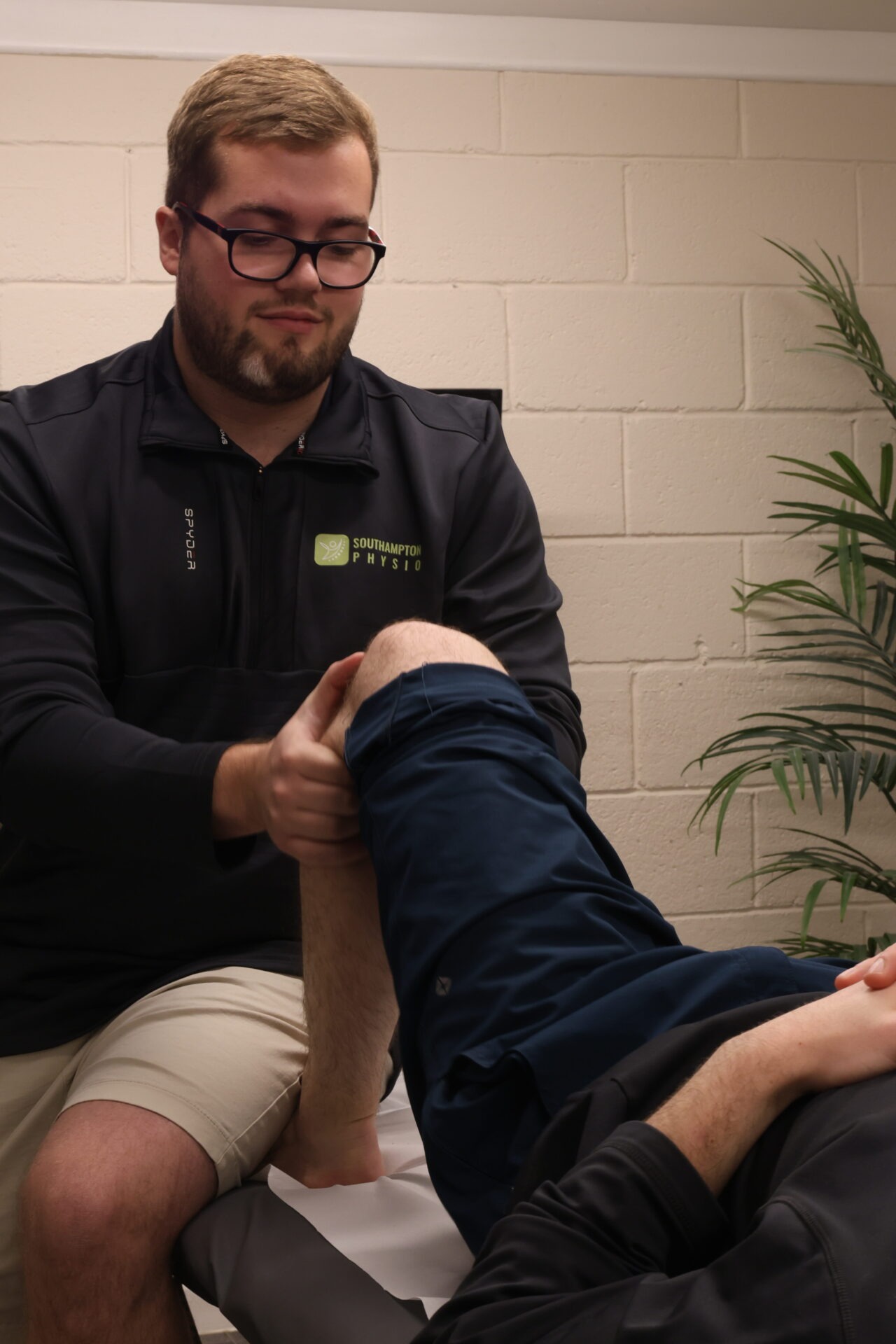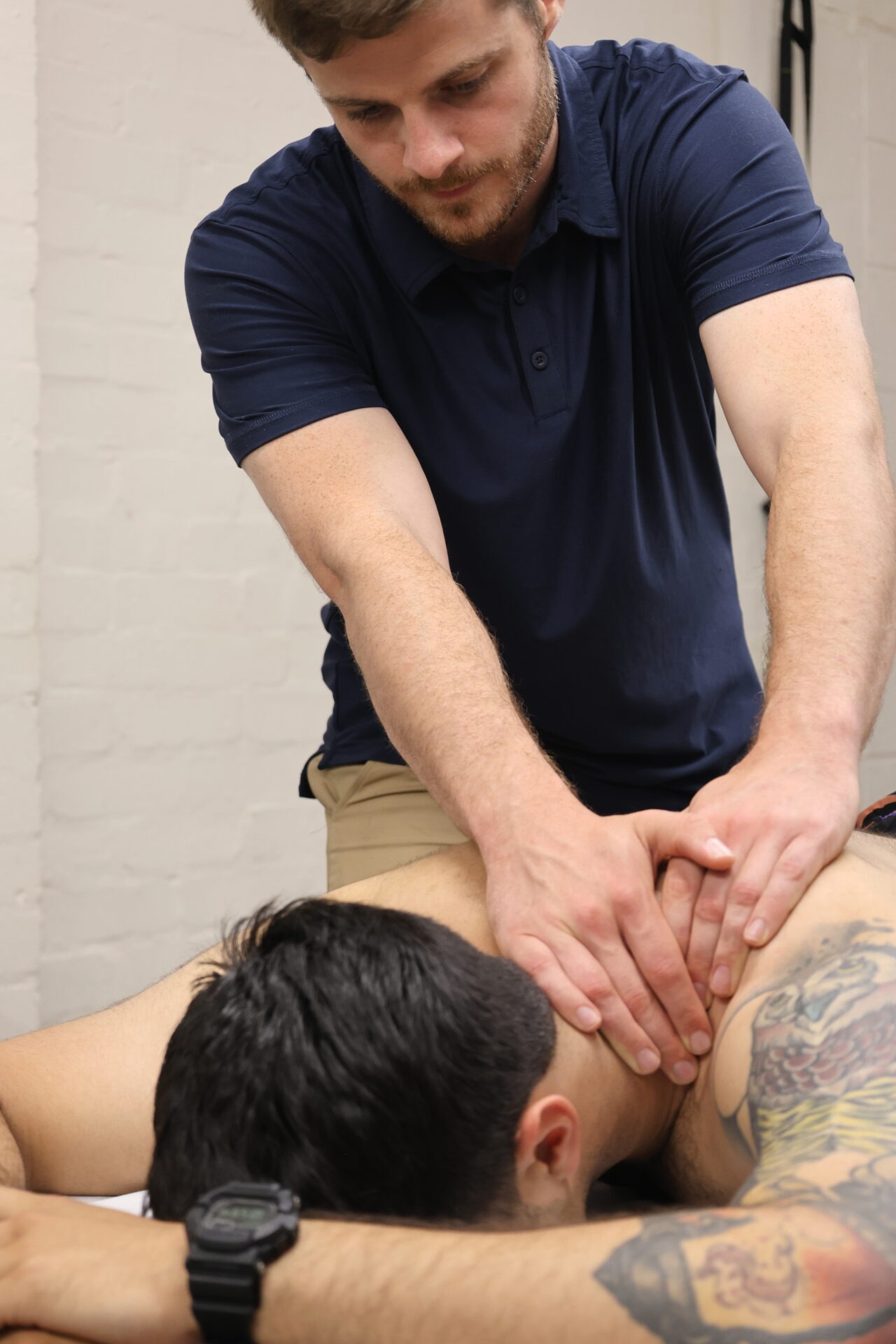Back, Neck and Sciatica

Back, Neck and Sciatica Treatment in Southampton
Back pain that keeps flaring up. A stiff neck that won’t turn fully. A strange, shooting pain running down your leg. Maybe it started after a long day at the desk, maybe it came out of nowhere. If that sounds like you, you’re not alone.
Back, neck and nerve-related pain are the most common issues we see at Southampton Physio. These problems can be short-lived but, for many people, they drag on or keep coming back in cycles. And when you’re in it, it can feel confusing, frustrating and, at times, a bit scary.
We’re here to help you break that cycle. To figure out what’s actually going on. To calm things down – and then build things back up, stronger than before.
Whether your pain started yesterday or ten years ago, we’ll meet you where you’re at and give you a plan that makes sense for you.
Conditions We Treat
This category covers everything from new injuries to long-term nerve pain.
We have dedicated pages for:
We also support people with:
- Spinal stenosis
- Facet joint irritation
- SI joint dysfunction
- Mid-back stiffness
- Coccyx pain
Not sure what your issue is called? Don’t worry – we’ll figure it out together.

Common Problems We Help With
You don’t need a diagnosis to get started. But here are some of the issues people often come to us with:
- Lower back pain that keeps flaring up - especially after lifting, sitting or bending
- Sciatica or nerve pain down the leg, buttock or into the foot
- Neck stiffness or pain that spreads to the shoulders or arms
- Headaches or migraines linked to neck tension
- A ‘slipped disc’ or disc herniation diagnosed by a GP, physio or scan
- Whiplash symptoms - neck pain, dizziness, headaches after an accident
- Tingling, pins and needles or numbness in the limbs
- A fear that your back or neck might ‘go’ again if you move wrong
- General stiffness, fragility or lack of confidence in your spine
Some people come to us in a full-blown flare-up, barely able to stand straight. Others feel stuck in a low-level discomfort that’s never quite gone away. Either way, we can help.

Why Is This Happening?
First, let’s get something straight: Back and neck pain are incredibly common.
Most of us will experience them at some point in life. That doesn’t make the pain any less real – but it does mean it’s rarely a sign of serious damage.
Despite what you may have heard, your spine is not fragile. It’s strong, adaptable and designed to move. But, like any system, it can get irritated – especially when stress, poor sleep, movement habits, old injuries or overload combine.
Some common causes or contributors include:
- Disc irritation or herniation – common in younger adults, may cause sciatica or pain when sitting
- Nerve sensitivity – often triggered by inflammation or overload, not necessarily ‘compression’
- Joint irritation – such as facet joints or sacroiliac joints (SIJ), especially with twisting or extension
- Muscle guarding or spasm – a protective response to pain, injury or stress
- Postural strain – long periods of stillness, such as desk work, driving or phone use
- Stress and sleep disruption – tension and nervous system sensitivity can heighten pain
- Past trauma or flare-ups – previous episodes can affect how your body and brain respond
Often, it’s not just one cause – it’s a mix. That’s why quick fixes often fail. And it’s why we take the time to really understand the full picture.


Pain Doesn’t Always Mean Damage
If you’ve been told your scan shows ‘degeneration’, ‘wear and tear’ or a ‘slipped disc’, you might worry that your spine is permanently damaged. But here’s the truth:
- Many pain-free people have bulging discs on MRI
- “Wear and tear” is often just normal age-related change
- The link between scan findings and symptoms is often weak
- Pain is influenced by stress, fear, sleep, lifestyle - not just structure
We’re not saying imaging is useless – it can be helpful in rare cases. But for most people, the best way forward is movement, education, strength-building and support.
How We Help: Our Reset and Rebuild Approach
We combine physiotherapy, osteopathy and rehab coaching to offer a fully integrated approach.
You don’t need to choose which one you need – we’ll tailor a plan based on your goals, symptoms and preferences.
Here’s how we break it down:
Reset: Calm the System
- Hands-on treatment to reduce sensitivity and muscle guarding
- Reassurance and education so you understand what’s happening
- Gentle movement to restore confidence and reduce fear
- Breathing or pacing techniques if your nervous system is on high alert
- Ergonomic or lifestyle tweaks that reduce strain
This phase is about helping you feel safer, calmer and less flared up.
Rebuild: Strengthen the System
Once symptoms are settling, we focus on rebuilding resilience. That includes:
- Gradual strength training for your back, core, hips or neck
- Mobility work to restore pain-free range
- Functional rehab (lifting, carrying, twisting etc.)
- Confidence coaching - so you trust your body again
- Long-term planning to prevent future flare-ups
This isn’t just rehab – it’s reconditioning. Many of our patients leave not just pain-free, but stronger than before they got injured.


You Don’t Need to Pick a Specialist
Lots of people feel overwhelmed trying to decide between physiotherapy, osteopathy, sports massage or chiropractic care.
At Southampton Physio, you don’t need to make that choice. We’ve done it for you.
Our team works together to:
- Identify the best blend of hands-on care, coaching and rehab
- Adjust your plan as you progress
- Make sure you never feel lost, rushed or dismissed
- Keep things simple, clear and focused on outcomes
We don’t believe in selling endless sessions or keeping you dependent. We want you to leave stronger, more confident and independent.
Frequently Asked Questions (FAQs)
Can physio help with sciatica?
Absolutely. Sciatica is often caused by nerve sensitivity or irritation – physiotherapy can reduce symptoms, improve movement and prevent future flare-ups. In many cases, surgery or injections aren’t necessary.
Do I need a scan or X-ray?
Most of the time, no. Scans rarely change the treatment plan. A thorough assessment gives us all the information we need. We’ll only recommend imaging if there’s a genuine reason to investigate further.
Will hands-on treatment fix the problem?
Hands-on therapy can be very helpful in reducing pain, easing tension and restoring mobility. But lasting results usually come from combining manual treatment with movement and strength work.
Can you help if I’ve had pain for years?
Yes. Just because pain is persistent doesn’t mean it’s permanent. We regularly help people who’ve had symptoms for months or even years. With the right plan and support, positive change is absolutely possible.
What if it’s my posture?
Posture can contribute to discomfort, but it’s rarely the whole story. There’s no such thing as perfect posture – what matters more is movement variety, strength and confidence. We’ll help you improve how you move, not just how you sit.
